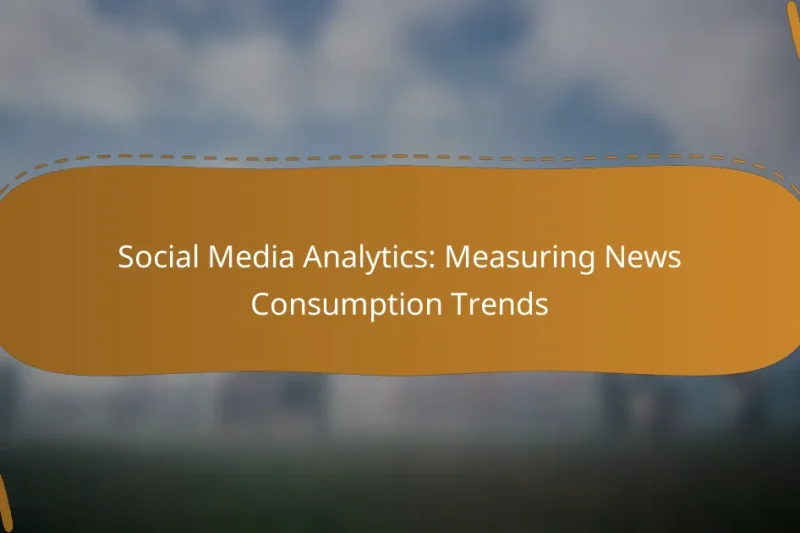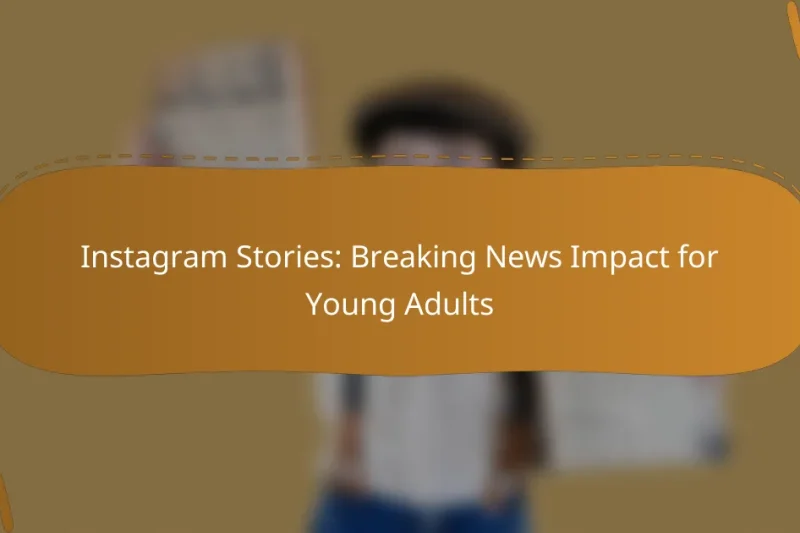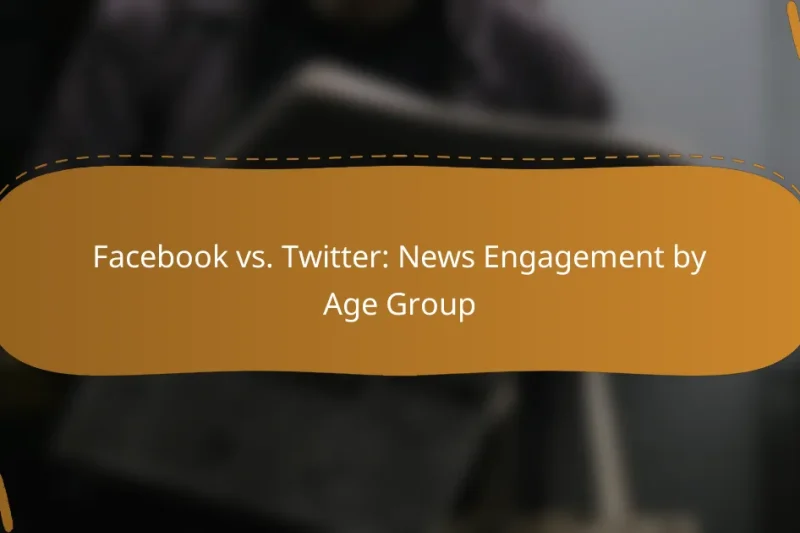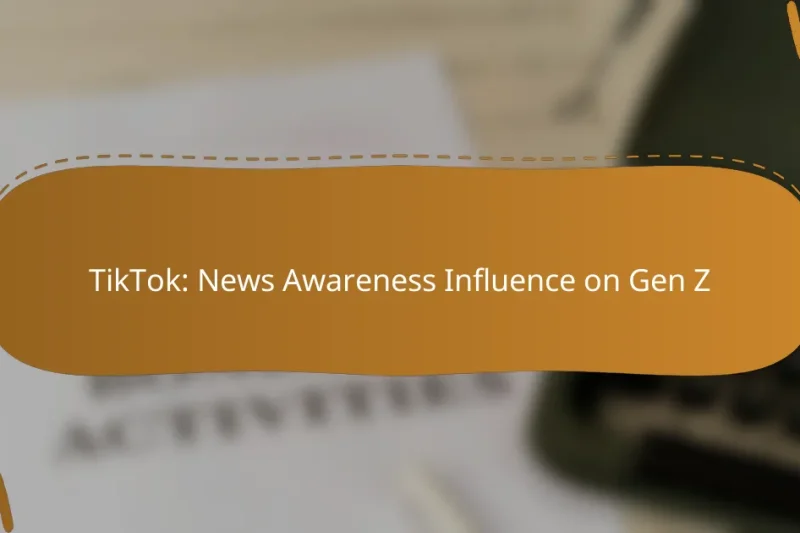Social media analytics plays a crucial role in understanding news consumption trends by offering valuable insights … Social Media Analytics: Measuring News Consumption TrendsRead more
Impact of Global News on Social Media Consumption
The impact of global news on social media consumption is profound, as it drives user engagement and reshapes how content is shared. Major events prompt users to seek real-time updates and discussions on platforms like Twitter and Facebook, highlighting the evolving landscape of news consumption.
Social Media Algorithms: News Visibility for Local Stories
Social media algorithms play a crucial role in shaping the visibility of local news by controlling … Social Media Algorithms: News Visibility for Local StoriesRead more
Social Media: Trust in News Sources and Perception
Social media plays a crucial role in shaping trust in news sources, as users often depend … Social Media: Trust in News Sources and PerceptionRead more
Millennials: Social Media News Usage and Engagement
Millennials in the United States increasingly turn to social media for news, favoring platforms like Instagram, … Millennials: Social Media News Usage and EngagementRead more
Instagram Stories: Breaking News Impact for Young Adults
Instagram Stories have transformed news consumption for young adults by delivering quick and visually engaging updates … Instagram Stories: Breaking News Impact for Young AdultsRead more
Facebook vs. Twitter: News Engagement by Age Group
The dynamics of news engagement on social media platforms reveal distinct preferences across different age groups. … Facebook vs. Twitter: News Engagement by Age GroupRead more
TikTok: News Awareness Influence on Gen Z
TikTok plays a crucial role in shaping news awareness among Gen Z by delivering information in … TikTok: News Awareness Influence on Gen ZRead more
How does global news influence social media consumption in the US?
Global news significantly impacts social media consumption in the US by driving user engagement and altering content-sharing behaviors. As major events unfold, users increasingly turn to platforms like Twitter and Facebook for real-time updates and discussions.
Increased engagement during breaking news
During breaking news events, social media platforms experience a surge in user engagement. People actively seek updates, share their opinions, and participate in discussions, leading to heightened activity across various channels.
This spike in engagement can be attributed to the immediacy of social media, allowing users to receive and disseminate information faster than traditional news outlets. For instance, during significant events like natural disasters or political upheavals, social media posts often multiply rapidly, creating a dynamic conversation around the news.
Shift in content sharing patterns
The influence of global news has shifted how users share content on social media. Users are more likely to share articles, videos, and infographics related to current events, prioritizing timely and relevant information over other types of content.
This trend reflects a growing preference for concise, impactful messages that resonate with ongoing discussions. For example, during major international events, users may share news articles with strong headlines or eye-catching visuals to capture attention quickly.
Rise of video content consumption
Video content consumption has surged in response to global news, as users increasingly prefer visual storytelling. Platforms like Instagram and TikTok have seen a rise in short news clips and live broadcasts that provide immediate context and updates.
This shift towards video is driven by its ability to convey complex information quickly and engagingly. News organizations are adapting by producing more video content, which often garners higher engagement rates compared to text-based posts. Users are encouraged to utilize video formats to enhance their own news-sharing efforts, making information more accessible and appealing.
What are the key platforms for news consumption?
The primary platforms for news consumption include social media sites like Facebook, Twitter, and Instagram. Each platform offers unique features that influence how users engage with and share news content.
Facebook as a primary news source
Facebook serves as a major news source for many users, with a significant portion of adults relying on it for updates. The platform’s algorithm prioritizes content from friends and family, which can lead to a more personalized news feed.
Users can follow news organizations, join groups, and engage with articles through comments and shares. However, it is essential to verify the credibility of sources, as misinformation can spread quickly in this environment.
Twitter’s role in real-time updates
Twitter is known for its real-time updates, making it a go-to platform for breaking news. Users can follow journalists, news outlets, and trending topics to stay informed about current events as they unfold.
The character limit encourages concise reporting, which can be both a strength and a limitation. While it allows for quick dissemination of information, it may also lead to oversimplification or lack of context in news stories.
Instagram’s visual storytelling
Instagram focuses on visual storytelling, making it an effective platform for news that relies on imagery. News organizations often use eye-catching photos and videos to engage users and convey information quickly.
While Instagram is less text-heavy than other platforms, it can still provide valuable insights through captions and stories. Users should be mindful of the potential for sensationalism, as visuals can sometimes overshadow the facts.
How do different demographics respond to global news on social media?
Different demographics exhibit distinct behaviors when engaging with global news on social media. Understanding these variations can help tailor content and strategies to better reach each group.
Millennials favor visual content
Millennials are drawn to visual content, such as images and videos, when consuming news on social media. Platforms like Instagram and Snapchat are popular among this group, as they prioritize engaging visuals over text-heavy posts.
To effectively reach Millennials, news organizations should focus on creating eye-catching graphics and short video clips that summarize key news stories. This approach caters to their preference for quick, digestible information.
Gen Z’s preference for TikTok news
Gen Z primarily consumes news through TikTok, where short, engaging videos dominate. This demographic values authenticity and relatability, often seeking out content that feels personal and less polished.
To engage Gen Z, news outlets should consider creating TikTok-friendly content that presents news in a fun and relatable manner. Utilizing trends and challenges can also enhance visibility and engagement among this audience.
Older generations use Facebook for news
Older generations, including Baby Boomers and Gen X, tend to rely on Facebook for their news consumption. This platform provides a familiar environment where they can connect with friends and family while staying informed.
For effective outreach to older users, news organizations should ensure their content is easily shareable on Facebook and consider using longer articles or posts that provide in-depth analysis. Engaging with community groups on the platform can also enhance reach and interaction.
What are the effects of misinformation on social media?
Misinformation on social media can lead to confusion and distrust among users, significantly impacting their perceptions and decisions. It often spreads rapidly, making it challenging for individuals to discern credible information from falsehoods.
Increased skepticism among users
The prevalence of misinformation has fostered a culture of skepticism among social media users. Many individuals now approach news and information with caution, questioning the validity of sources and the accuracy of content. This skepticism can lead to a reluctance to share information, which may hinder the spread of accurate news.
Users often rely on fact-checking services or cross-reference multiple sources before accepting information as true. This behavior reflects a growing awareness of the potential for misinformation to influence opinions and actions.
Impact on public opinion and behavior
Misinformation can significantly shape public opinion, often swaying individuals towards extreme views or unfounded beliefs. This shift can manifest in various ways, such as changes in voting behavior, public health decisions, or social attitudes. For instance, during health crises, misinformation about treatments can lead to harmful choices among the public.
Moreover, misinformation can create polarization, where groups become entrenched in their beliefs, making constructive dialogue more difficult. Awareness of this impact is crucial for users, as it underscores the importance of verifying information before forming opinions or taking action.
How can brands leverage global news trends for advertising?
Brands can effectively leverage global news trends for advertising by aligning their messaging with current events that resonate with their target audience. This approach not only enhances engagement but also positions the brand as relevant and timely in the eyes of consumers.
Real-time marketing strategies
Real-time marketing involves responding to current events or trends as they unfold, allowing brands to create timely content that captures audience attention. This strategy requires brands to monitor news feeds and social media channels closely to identify opportunities for engagement.
For example, during a major sporting event, brands can create ads that reference the event or engage with trending hashtags. However, it’s crucial to ensure that the messaging is appropriate and aligns with the brand’s values to avoid backlash.
Aligning campaigns with trending topics
Aligning advertising campaigns with trending topics can significantly boost visibility and relevance. Brands should identify topics that resonate with their audience and craft messages that connect their products or services to these trends.
Utilizing tools like Google Trends or social media analytics can help brands pinpoint what is currently popular. For instance, if a global environmental issue is trending, brands in the sustainability sector can highlight their eco-friendly practices in their campaigns. It’s essential to act quickly, as trends can change rapidly.
What metrics measure the impact of news on social media engagement?
Key metrics that measure the impact of news on social media engagement include engagement rates and sentiment analysis of user comments. These metrics provide insights into how audiences interact with news content and their emotional responses.
Engagement rates and shares
Engagement rates reflect the level of interaction users have with news posts, typically measured through likes, comments, and shares. A higher engagement rate indicates that the content resonates well with the audience, often leading to wider dissemination across social platforms.
For example, a news article that garners a 5-10% engagement rate is considered effective, while rates below 2% may suggest a lack of interest. Monitoring shares is crucial, as shared content can exponentially increase visibility and reach.
Sentiment analysis of user comments
Sentiment analysis involves evaluating user comments to gauge public opinion about news articles. This analysis categorizes comments as positive, negative, or neutral, providing a clearer picture of audience sentiment.
Tools for sentiment analysis can range from simple keyword-based systems to advanced machine learning algorithms. Understanding sentiment helps news organizations tailor their content and address audience concerns, improving future engagement.
What future trends are emerging in news consumption on social media?
Future trends in news consumption on social media are increasingly shaped by technology and user preferences. Key developments include the rise of personalized content delivery and the integration of artificial intelligence in news curation.
Growth of AI-driven news curation
AI-driven news curation is transforming how users receive news on social media platforms. Algorithms analyze user behavior and preferences to deliver tailored news feeds, ensuring that content is relevant and engaging.
This technology can enhance user experience by reducing information overload and providing timely updates. However, it also raises concerns about echo chambers, where users may only see news that aligns with their existing beliefs.
To navigate this landscape, users should diversify their news sources and critically evaluate the information presented. Engaging with a variety of perspectives can help mitigate the risks associated with algorithm-driven content.






